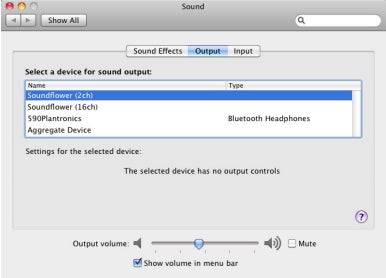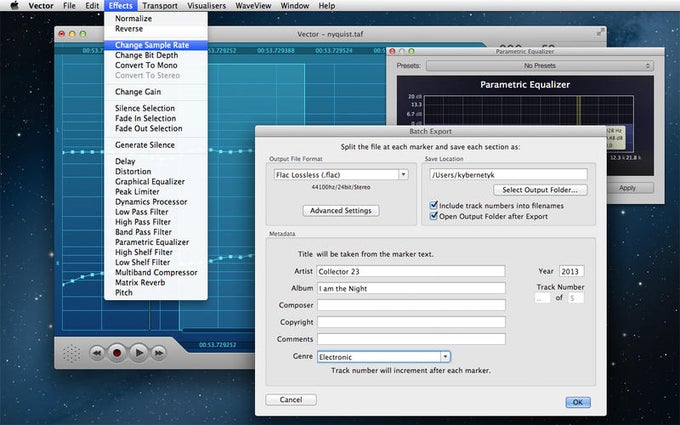
- #Soundflower for mac via homebrew for mac os x
- #Soundflower for mac via homebrew mac os x
- #Soundflower for mac via homebrew mac os
- #Soundflower for mac via homebrew install
In such situations you can use Soundflowerbed, an application that resides in the Finder’s Menubar allowing you to tap into Soundflower channels and route them to an audio device. When using Soundflower to send audio to and from applications, you may find that you are not able to send audio through another device to monitor audio output. Record streaming audio from iTunes into Audacity, or route an audio stream from iTunes to Logic. Use an application called DittyBot and Skype to access your iTunes collection from any cellphone. Instead of recording an interview with Skype and only hearing one voice, Soundflower lets you publish both voices for a complete interview experience. Soundflower has been used extensively in podcasting by combining separate streams of audio into one source.

Since Soundflower offers a straight forward method of communicating between applications on the Mac, there are a variety of situations where you can employ it. If you are hearing clicks or breakups, try increasing the buffer size of both applications (set within each application). If you want an application to send and receive audio through Soundflower, (for instance using Max/MSP to manipulate and return another application’s audio) you must send and receive the audio on different audio channels or a feedback loop will be created. If more than one application is sending its output to the same channel, the audio will be mixed. Note that Soundflower’s audio channels represent a global audio space. The 16-channel device is provided for more complex routing situations, and can be used with more than two applications simultaneously if the applications support audio routing to any channel, as Max/MSP does. If an application does not allow you to specify audio devices, you can make Soundflower the default input or output device inside the Sound panel in the System Preferences, or with the Audio MIDI Setup utility application. To send the output of one application to another, select Soundflower as the output device in the first application and Soundflower as the input device within the second application. The 2-channel device is sufficient for most situations. Soundflower presents itself as one of two audio devices (2ch / 16ch).
#Soundflower for mac via homebrew mac os
#Soundflower for mac via homebrew install
#Soundflower for mac via homebrew mac os x
Soundflower is a Mac OS X (10.2 and later) system extension that allows applications to pass audio to other applications.
#Soundflower for mac via homebrew for mac os x
Is there a fix for this? It's a very irritating bug.Free Inter-application Audio Routing Utility for Mac OS X Yes, there are built-in volume controls on the monitor which you can adjust if you use about 20 irritating button clicks on the buttons underneath the screen, but Windows 10 also lets me adjust the volume regardless of that. This isn't a problem with my Windows gaming PC. technically correct I guess lol).īut the most annoying thing is that I can't use the OS volume, or the keyboard shortcuts, to adjust the volume of the built-in speakers in the monitor. The display itself works just fine, although for some reason the Display Settings in Mac OS only let me select 120hz (not the full 144hz) and it seems to think my monitor is a TV so the resolution is '1080p' (which is.

It's using a HDMI 2.0 cable connected up to a USB-C hub. I have a mid-2019 13" MacBook Pro connected up to my AOC 24G2U 144hz monitor. Hey there, I'm hoping some kind individuals might be able to help me resolve this small but quite frustrating issue.


 0 kommentar(er)
0 kommentar(er)
